
Prismatic Gilgamesh
October 2022 | Vol. 10.10
By Sophus Helle
It is 150 years ago since George Smith, a self-taught Assyriologist working at the British Museum, first translated a line from the Epic of Gilgamesh into English. Smith was working on cuneiform tablets that had recently been discovered at the Assyrian capital of Nineveh, and on December 3, 1872, he presented his findings to the Society of Biblical Literature.
In the century and a half that has passed since, the epic has been translated into two dozen more languages: Arabic, Japanese, Czech, Georgian, Maltese, Farsi, Hebrew, Russian, French, Spanish, Catalan, Portuguese, Italian, German, Dutch, Swedish, Norwegian, Icelandic, Finnish, and—perhaps most astonishingly—Klingon, the alien language spoken by an alien species in Star Trek. I myself have translated it first into Danish with my father, the poet Morten Søndergaard, and then into English, for a book that appeared last November with Yale University Press.
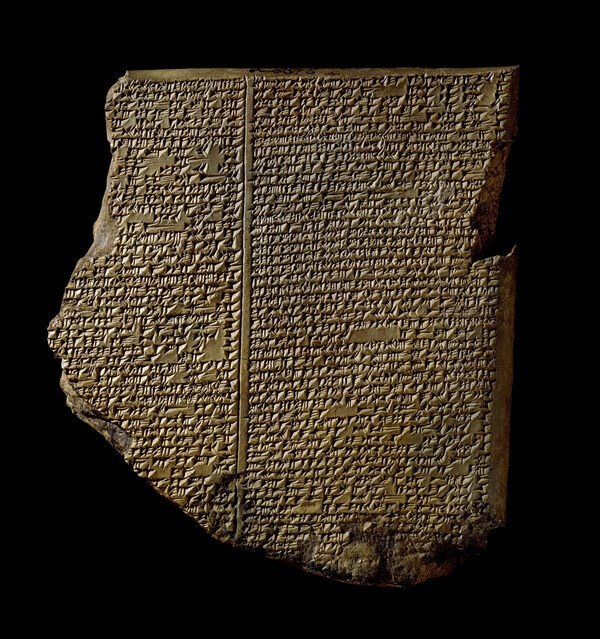
Epic of Gilgamesh, tablet 11, story of the Flood. © The Trustees of the British Museum
The wealth of translations is perhaps less surprising if one considers that Gilgamesh has been, throughout its millennial lifespan, a language-crossing tale. Stories about Gilgamesh, the legendary king of Uruk, were told in a variety of versions from the twenty-first to the second century BCE. The best-known of these versions are a Sumerian cycle of poems, prose retellings in Hittite and Hurrian, and an epic poem in the Old Babylonian and the Standard Babylonian forms of the Akkadian language. It is a fair bet that Berossus’s Babyloniaca also included a summary of Gilgamesh’s story in Greek, though the passage has not been preserved, and that versions of Gilgamesh’s tale circulated in Aramaic. But even without these additional possibilities, there are few stories in the ancient Near East that have survived in as many languages as Gilgamesh.
To these journeys across languages, one may add the story’s journeys across media. Just as the epic poem we know today was born between two languages (Sumerian stories retold in Akkadian) so was it born between two media (oral stories retold in writing). We know precious little about how the epic was performed in antiquity, but the evidence that we do have still presents us with a plethora of genres and forms for the Gilgamesh historian to work on: prayers to Gilgamesh as an underworld deity, a comic letter supposedly written by Gilgamesh himself, depictions of his battlefield feats on cylinder seals and palace reliefs, references to the hero in omens, incantations, and drinking songs, and allusions to the epic in royal inscriptions and other literary compositions.
As with the translations, this richness of media is reflected in its modern reception. Over the past 150 years, Gilgamesh’s story has been retold in novels, plays, operas, symphonies, comic books, anime, sonnets, sculptures, paintings, and parodies. Gilgamesh has lent his name to a restaurant in London, a species of Madagascan ant, a crater on Ganymede, a Japanese softcore porn show, a character in the video games Fate, Final Fantasy, and Civilization, and a terrifying piece of technology developed by the NSA, which is used to guide drone to their victims. Since Gilgamesh’s story rivals the Marvel Cinematic Universe (MCU) in its constant ability to generate spin-offs, it is only fitting that the latest installment of the MCU should include yet another take on his tale: brilliantly portrayed by Don Lee, Gilgamesh appears in the movie Eternals (2021) as a kindly, massive, pie-baking superhero.
Faced with this abundance of versions, I find myself asking two questions. One: What is it about Gilgamesh’s story that renders it so endlessly retellable? And two: How might a would-be translator (or playwright or composer or painter or filmmaker) contribute to this already impressive lineage? I will argue that the answer to the first question provides us with an immediate answer to the second.
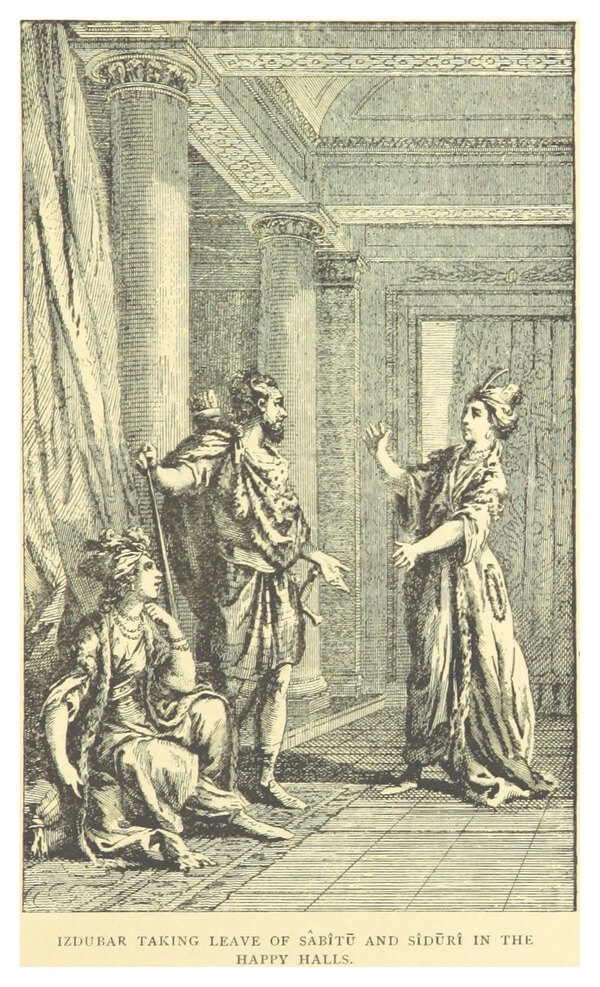
Illustration from Leonidas Le Cenci Hamilton’s Ishtar and Izdubar, the epic of Babylon (1884), an imaginative verse retelling of Gilgamesh.
The literary critic Matthew Reynolds has coined the term prismatic translation to describe the way multiple translations of a single work tend to diffract the many aspects that are contained within that work. Think of a beam of white light being split by a prism into a rainbowlike display. All these colors were contained in the original white ray: the prism has merely revealed them. So it is with translations and transmedial retellings, which amplify one or another feature of their source. Gilgamesh is a perfect illustration of this phenomenon. Some retellings focus on the hero’s fear of death and desire for immortality; others on his love for another man, or his grief when that man dies, or his instinctive violence, or his soft-hearted tenderness. Still others bring out the themes of kingship, or community, or storytelling, or the human tendency to violate our natural environment. This list goes on and on, and every theme is contained, in one form or the other, in the original stories about Gilgamesh.
Perhaps we can turn the first question on its head: Gilgamesh circulated for two thousand years in the ancient world—and became an explosive hit in the modern one—precisely because it was endlessly retellable, because its light-beam held many colors within it. The hero’s life-story interweaves so many themes and topics that every age and every reader can find something in his adventures that they can relate to on a deeply personal level. That is why we are still talking about him today, four and a half millennia after the earliest preserved mention of his name: because there is always something new to talk about.
If the secret to Gilgamesh’s success lies in the way it condenses a vast number of resonant topics into one story, then it is clear what translators and artists must do when they set out to retell that story. They must seize on those topics, features, or literary effects that appeal to them the most, and amplify them to the best of their abilities. By doing so, they will add yet more color to the epic’s already dazzling display, allowing readers that cannot access the text in any of its original languages to enjoy the story in all its nuanced complexity. What is lost in every individual translation is made up for by the availability of multiple translations, each of which gives us its own slice of the Gilgamesh spectrum.

The ant species Tetramorium gilgamesh, which lives in the Madagascan rainforest and was discovered by Francisco Hita Garcia and Brian L. Fisher in 2014. Photo by Michele Esposito / CC-BY-4.0.
For me, one of the most compelling aspects of Gilgamesh’s story is his constant restlessness: throughout his adventures, he is driven by a powerful force within him that he can never quite understand, let alone control. The gods say about him that there is a “storm in his heart”; and his mother, the all-knowing Ninsun, likewise complains of his “unsleeping heart.” At one point, Gilgamesh’s friend Enkidu asks him why the two of them embarked on their quest against the monster Humbaba, completely destroyed the forest that Humbaba guarded. Imagining himself and Gilgamesh questioned by the gods, he asks: “What wrath sent you trampling through the forest?” But the heroes cannot answer, for they are not in control of themselves, and in a way, none of us are. I find this treatment of the heroes’ motives both psychologically compelling and poetically effective.
My recent translation of Gilgamesh was born out of a chapter which came to be entitled “The Storm of His Heart,” in which I set out to describe precisely this feature of the epic: its depiction of strong, obscure emotions. The chapter eventually mushroomed into a book that sought to unpack the epic and its world for readers who knew nothing of Gilgamesh. When Yale University Press accepted the book, but asked me to provide a translation of the epic to go with it, the temptation to accept was too strong to resist. I had already translated the epic into Danish and was therefore emboldened to attempt an English version as well.

Cosplayers dressed up as characters from the video game Fate: Gilgamesh on the left, Nero Claudius on the right. Public Domain via Wikimedia Commons.
In the English translation, I therefore tried to stay true to my core instinct, rendering in my version what I saw as the powerful force that runs through the text like an obscure undercurrent. I did my best to use rhythm, alliteration, and half-rhymes to imbue the text with a forward-force—that is, to make the epic feel as if there were a storm inside its literary heart. I leave it to the reader to judge whether I succeeded. What I know for sure is that this is not the last retelling of the epic: the story will continue to shine for as long as there are readers to enjoy its many colors.
Sophus Helle is a postdoctoral fellow at Freie Universität Berlin. He is the author of Gilgamesh: A New Translation of the Ancient Epic.
How to cite this article
Helle, S. 2022. “Prismatic Gilgamesh.” The Ancient Near East Today 10.10. Accessed at: https://anetoday.org/helle-prismatic-gilgamesh/.
Want to learn more?
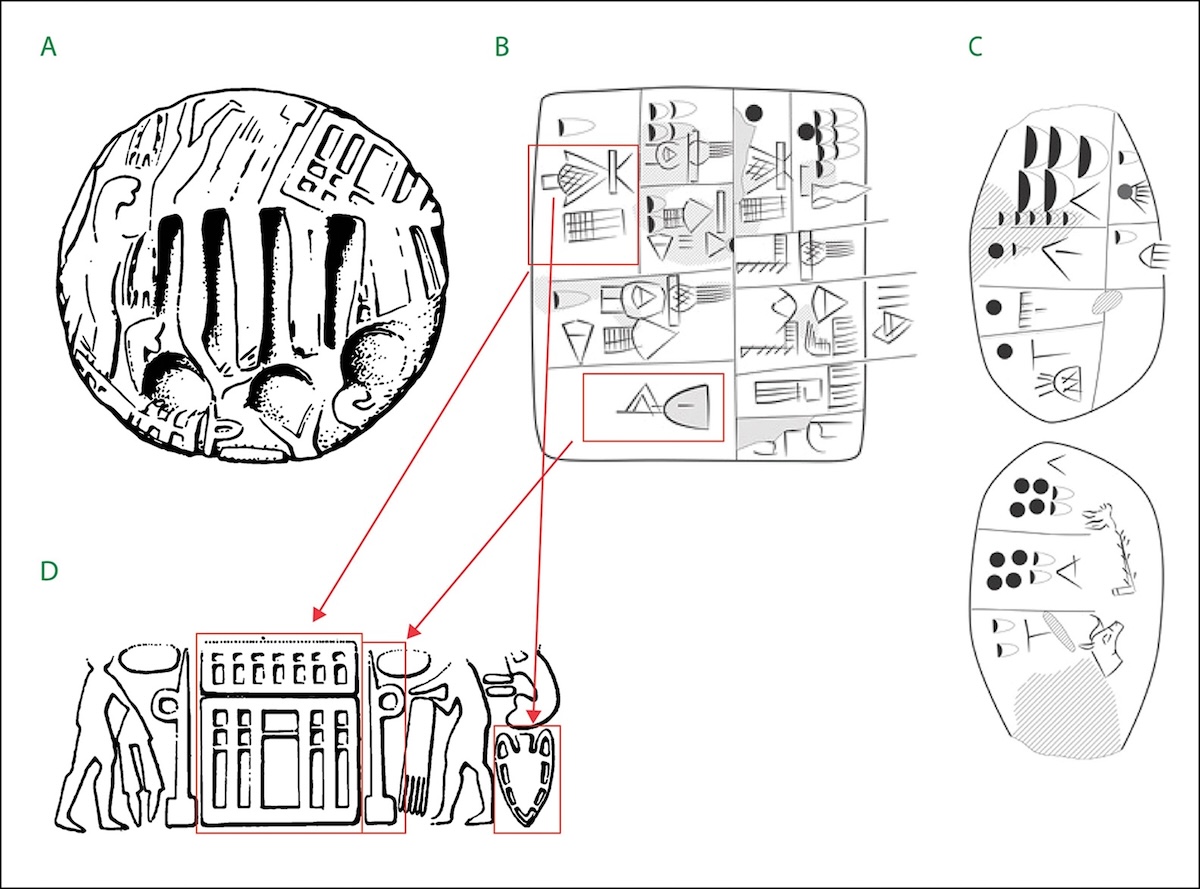
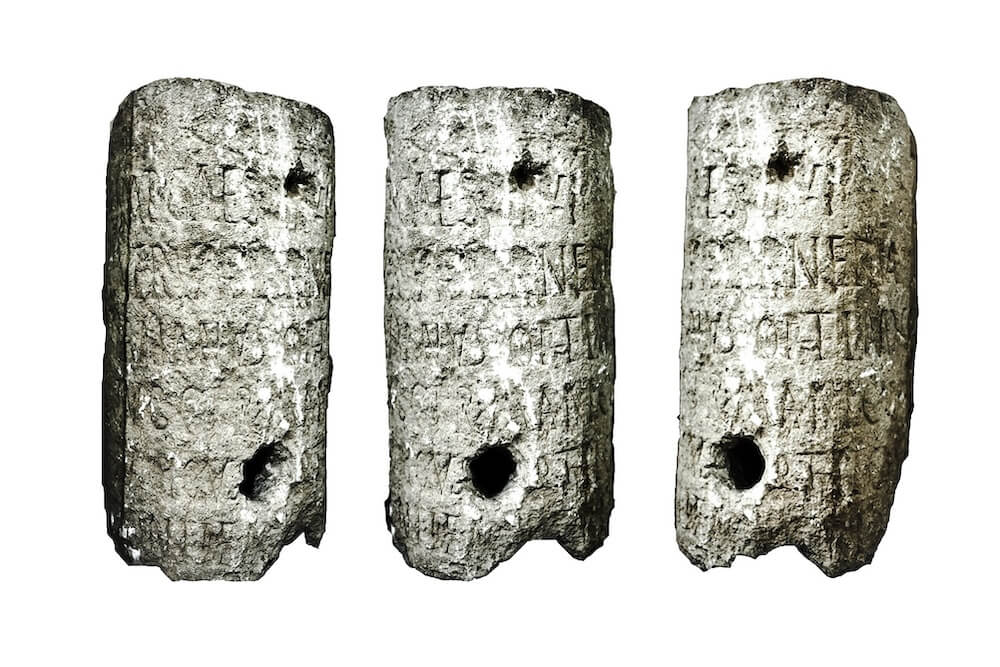
The Land at the End of the Empire: The Roman Eastern Border in Mesopotamia
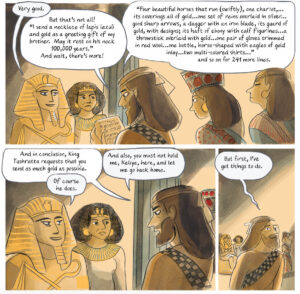


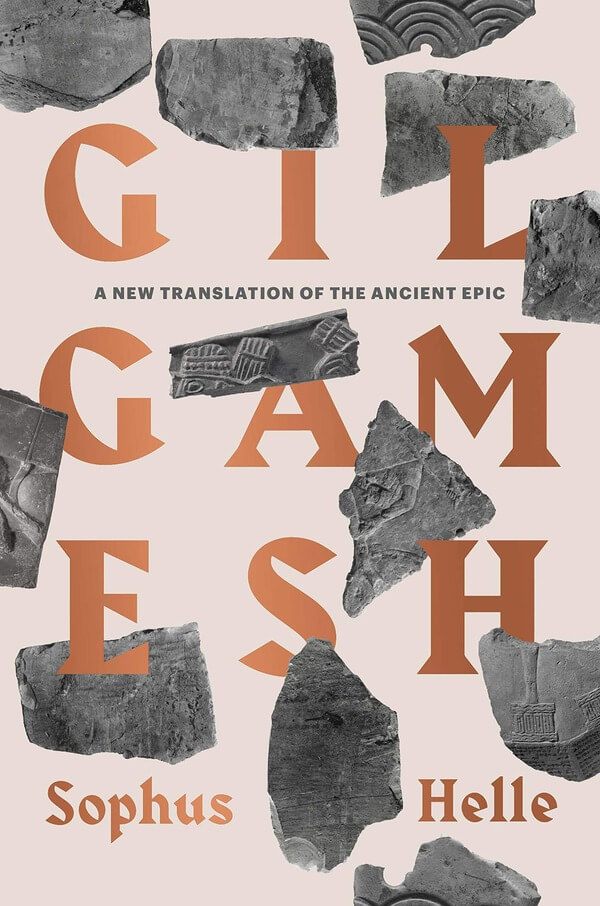
Post a comment